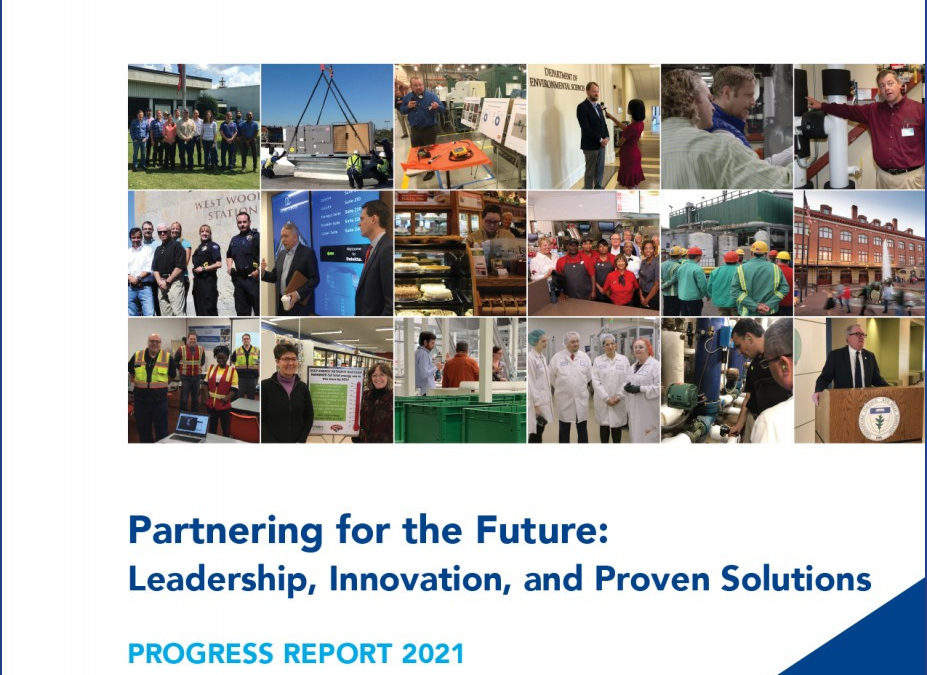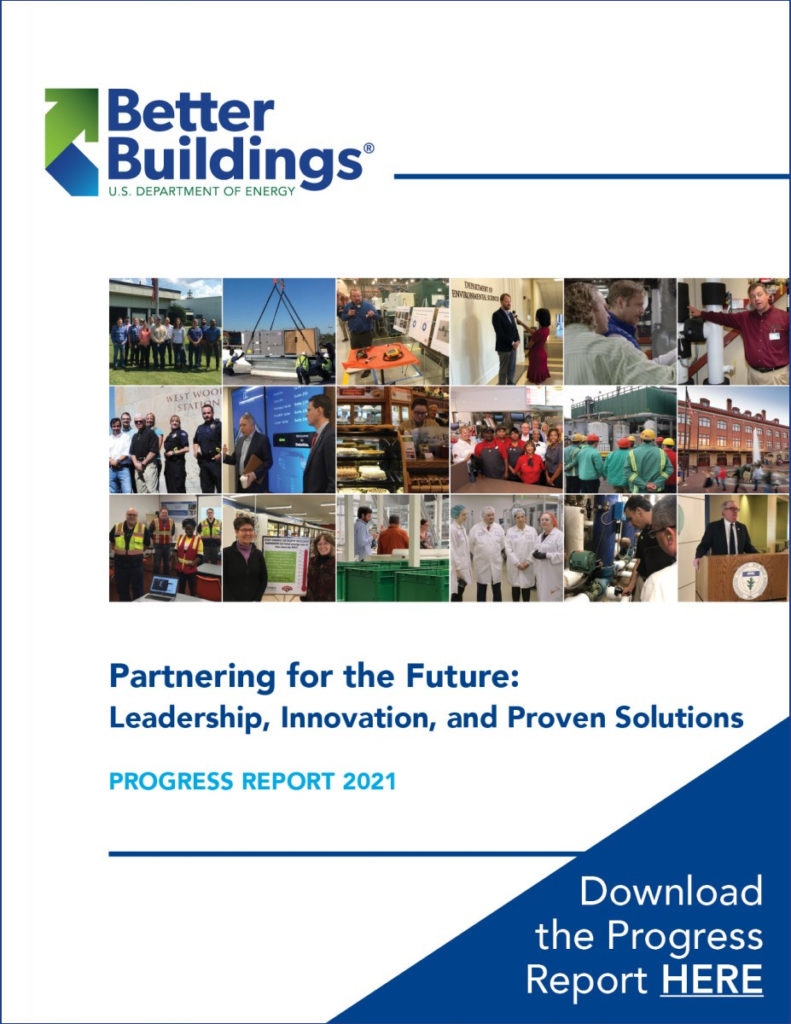DOE announces sweeping national actions to boost energy efficiency and the use of clean energy

Explore the 2021 Better Buildings Progress Report to learn how DOE and partners are working towards a more energy-efficient future. Image courtesy DOE
As part of a White House roundtable on building energy efficiency, U.S. Secretary of Energy Jennifer M. Granholm recently announced sweeping actions to power more American buildings with cleaner, smarter, and more affordable energy services intended to sharply reduce the buildings sector’s contributions to the climate crisis.

“America’s path to a net-zero carbon economy runs straight through our buildings, which means we need to help households and commercial buildings across the nation reduce their emissions and convert to cheaper, cleaner energy,” said Secretary Granholm. “These new DOE investments and initiatives will help unlock new innovation for cleaner buildings, while preparing a strong, skilled, diverse American workforce to seize good-paying job opportunities right here at home.”
According to the Department of Energy (DOE), residential and commercial buildings account for more than one-third of the climate-altering carbon pollution America releases each year. They use about 40% of the nation’s energy, and waste more than $100 billion annually due to energy inefficiency. Federal leadership, in close coordination with state and local governments and in partnership with the private sector, unions, trades, researchers and other key stakeholders, will be needed to catalyze the deployment of these low-carbon solutions.
The actions announced are expected to cut the energy and emissions footprints of buildings by reducing their waste of polluting energy sources and integrating them with clean, electrified power. They reflect the latest examples of DOE’s whole-building approach to transform the construction, renovation, and operation of buildings and appliances, as well as empowering workers who build and maintain them:
- Investing in Buildings’ Workforce of the Future: New investments of up to $30 million for the American workforce will expand DOE’s support for organizations — including unions, trade associations, and educational institutions — that train and support career pathways for a diverse, qualified, and well-paid workforce that enables high-performance buildings. To ensure this new initiative is inclusive and thorough in producing high quality jobs and careers, DOE will also begin hosting a series of roundtable conversations with construction, manufacturing and union leaders that can support development and maintenance of green buildings.
- Advancing Efficiency in Heating and Cooling Systems: A new national initiative focused on clean and efficient heating and cooling systems in buildings called the Initiative for Better Energy, Emissions, and Equity (E3) will advance the research, development, and deployment of clean heating and cooling systems like heat pumps, advanced water heaters, low-to-no-global-warming-potential refrigerants, and smarter HVAC diagnostic tools.
- Driving Adoption of Smart Building Technologies: A National Roadmap for Grid-Interactive Efficient Buildings will chart a path to triple the energy efficiency and demand flexibility of U.S. buildings within the decade — worth $100 to $200 billion in energy cost savings — by implementing 14 practical recommendations that accelerate the ability of buildings to both reduce and change the timing of energy use through smart building operations sensitive to broader grid dynamics.
- Collaborating with Industry to Decarbonize Buildings: The Better Buildings Low Carbon Pilot, a project of the Better Buildings Initiative, will work with commercial, industrial, and multifamily organizations to set commitments and share pathways to low- and no-carbon emission buildings. The first 55 participating organizations were recognized at the Better Buildings Summit.
- Opening Up Windows for Collaboration: The Partnership for Advanced Window Solutions (PAWS) will accelerate the national availability and adoption of advanced and highly efficient windows and window attachments that improve comfort and reduce building energy use.
Started in 2011, the Better Buildings Initiative has partnered with leaders in the public and private sectors to make the nation’s homes, commercial buildings, and industrial plants more energy efficient by accelerating investment upgrades and products and sharing successful best practices.
The 2021 Better Buildings Progress Report released the day of the announcement outlines the progress and collaboration of Better Buildings partners, which represent more than 30 of the country’s Fortune 100 companies, 12 of the top 25 U.S. employers, 12% of the U.S. manufacturing energy footprint, and 13% of total commercial building space, as well as 17 federal agencies, eight national laboratories, and more than 80 states and local governments.
Visit DOE’s Building Technologies Office and the Better Buildings Initiative for more information on any of these opportunities.
